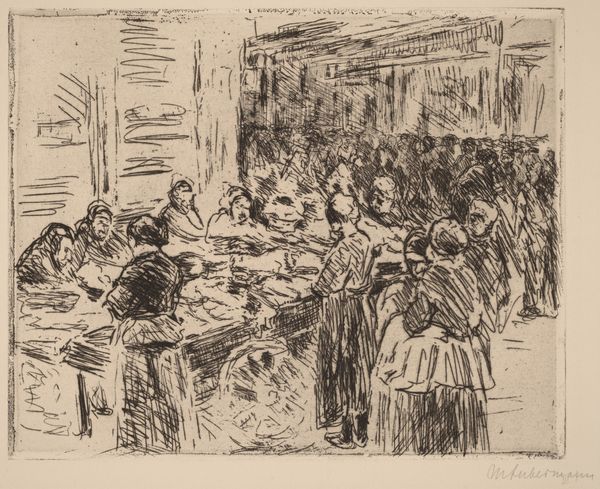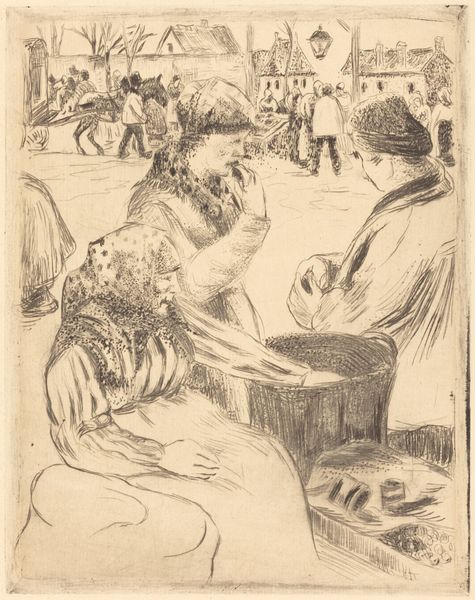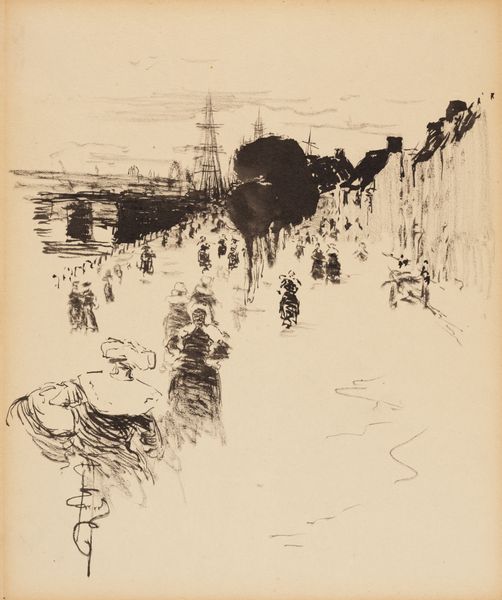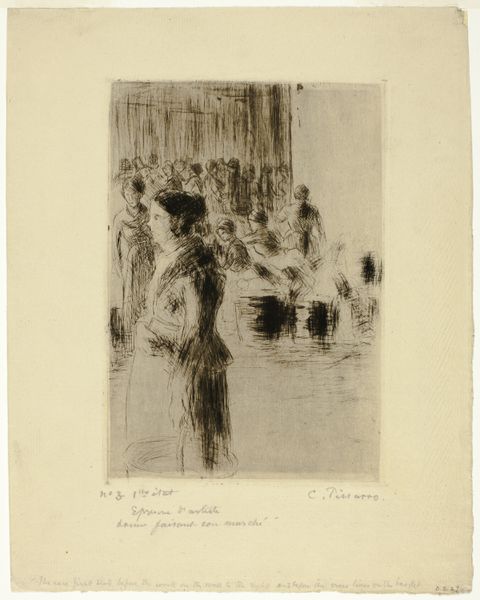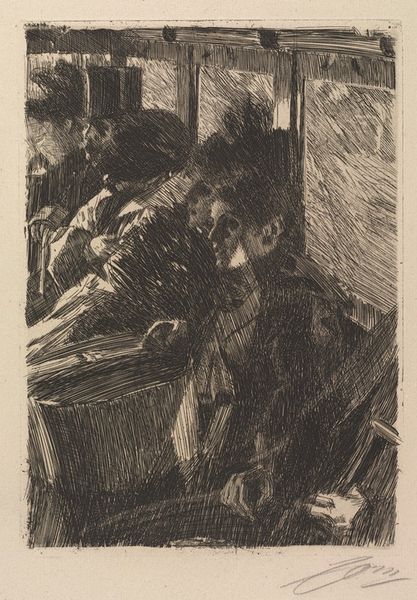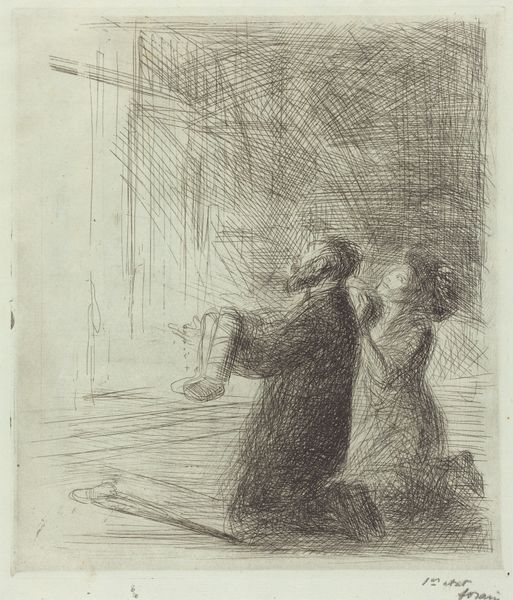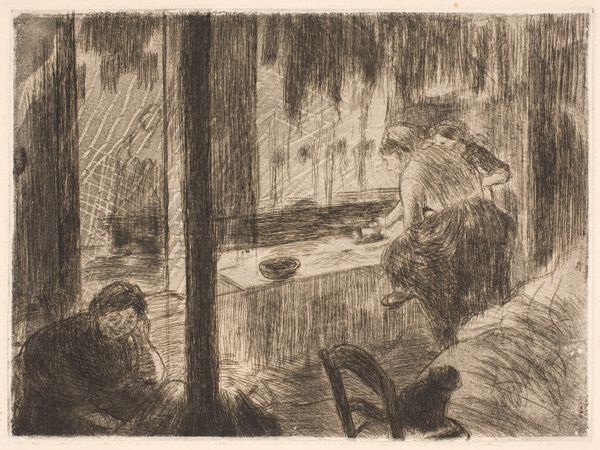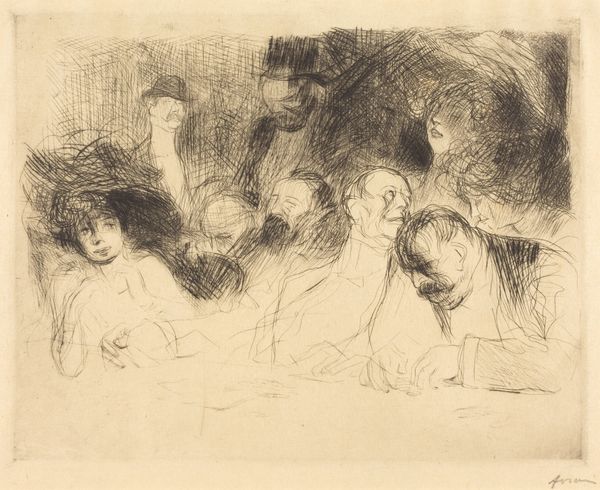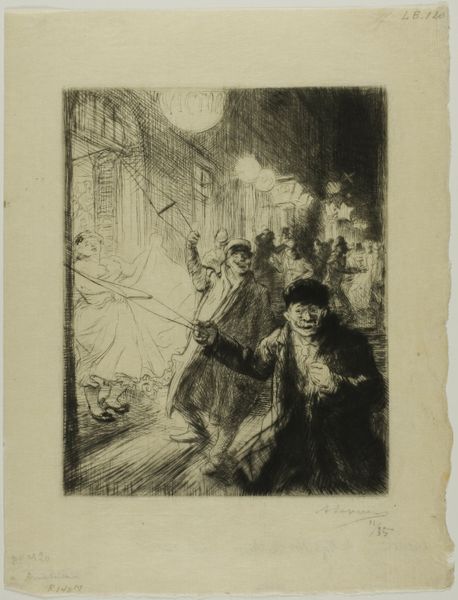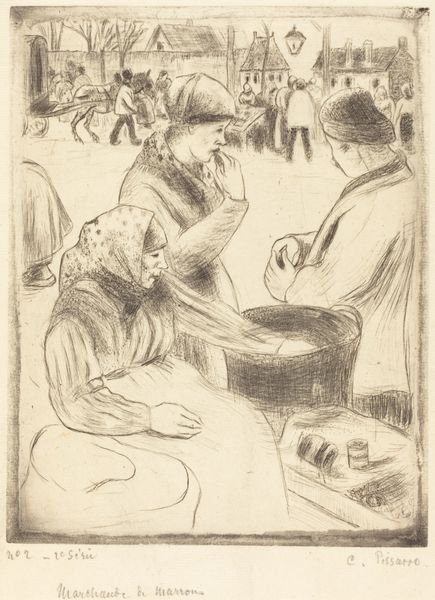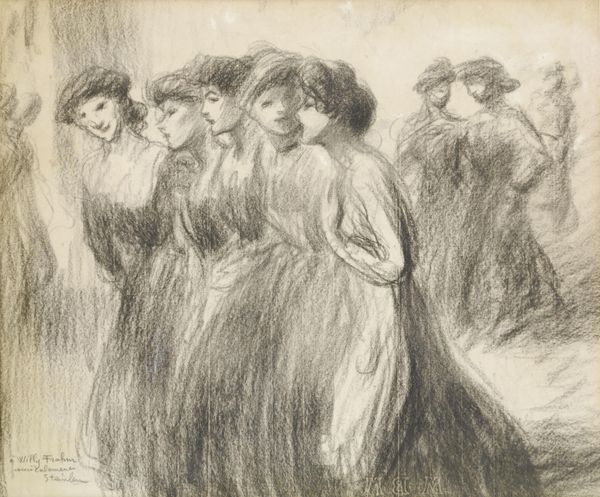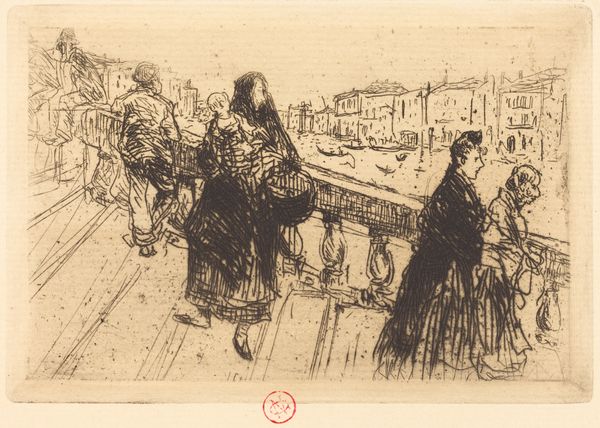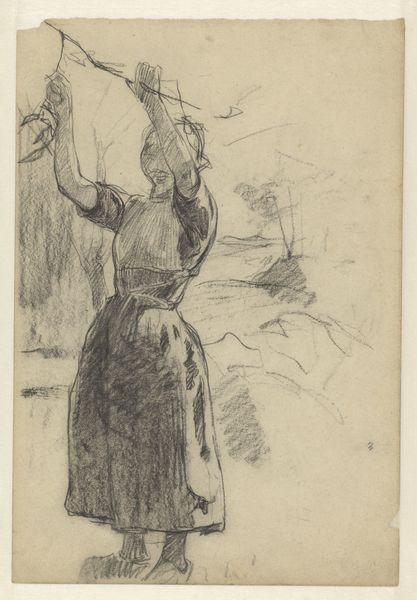
drawing, print, etching
#
pencil drawn
#
drawing
# print
#
impressionism
#
etching
#
pencil sketch
#
figuration
#
men
#
cityscape
#
genre-painting
Dimensions: sheet: 13 7/8 x 9 3/16 in. (35.3 x 23.3 cm) plate: 7 5/8 x 5 3/16 in. (19.4 x 13.1 cm)
Copyright: Public Domain
Curator: Look at this bustling scene! This is Camille Pissarro's etching "The Maid at the Market," created in 1888, offering a slice of late 19th-century Parisian life. Editor: My first impression is how ephemeral it feels. The artist uses the etching medium to create these thin, delicate lines; a sense of transience pervades the entire composition. Curator: That's perceptive. Pissarro was deeply invested in portraying the realities of the working class. We see the labor happening, the unglamorous reality of daily existence in Paris through the presence of these women. It is critical to examine it through a gendered lens, focusing on the burden of domestic and economic duties assumed by these women within a capitalist system. Editor: The market as a meeting point; it is such an important symbol across many cultures, going back centuries. These figures seem placed within this visual vortex where commerce, social interaction, and the rhythms of everyday life all converge. There is an emphasis on female figures carrying baskets and tending stalls. Do you notice the emotional quality communicated through the posture of the main figure in the foreground, contrasted with those indistinct bodies in the distance? Curator: Absolutely, this contrast reflects the varying degrees of visibility and agency afforded to women in the public sphere at the time. Some were positioned to exist on the margins of public engagement while others have more access to that sphere. Editor: Pissarro captures it all in what seems to be a rapid sketch, but the deeper I look, the more complexity I uncover! The way Pissarro utilizes the symbol of the market resonates to our time now. Curator: It certainly invites a contemporary dialogue. These historical images speak to our current struggles. There are conversations about gender, labor and inequality which demand constant attention, engagement, and commitment. Editor: Thank you for sharing. The convergence of daily life and universal, visual language becomes truly exciting!
Comments
No comments
Be the first to comment and join the conversation on the ultimate creative platform.
